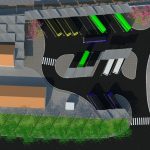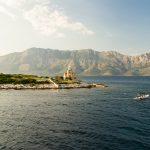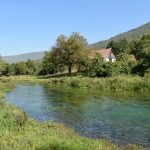As many of you are aware, Split revealed the master plan for the revitalization of the East Coast and Kopilica. After the public presentation and a series of workshops with the media, councilors, architects and private landowners, one of the project’s authors, Christof Schremmer from the Austrian Institute for Spatial Planning, spoke in detail with Dalmatinski Portal on March 25, 2019.
On the example of Vienna, Schremmer showed that he had similarly implemented this idea, that is, create an entire urban neighborhood around a station which was previously avoided by inhabitants.
Vienna is an optimistic example, but on the other hand, for one European town, it took 12 years from the idea to completion. How realistic is it that Split will realize everything in their announced timeframe?
“It’s realistic. We gathered all the stakeholders, from the Croatian Railways, the HŽ Cargo, the Port Authority to the Croatian Roads, to work together to find solutions. When we talk about the timeline, we are talking about two locations – East Coast and Kopilica. As far as the East Coast is concerned, which is considerably smaller than Kopilica, it is necessary first to clean and repair the railway line. When this happens, it is possible to realize it in some ten years. Kopilica is much bigger; for this, we believe it will be a brand new neighborhood in the city and we are talking about a realistic 20-year period. So, in that period, everything will be completed, from hotels, apartments, tourist facilities, promenades, a pedestrian bridge over Ulica Domovinskog rata. In this area, it is crucial to build an intermodal transportation center from which everything moves, after that we would need to resolve the rail and freight terminal in Stinica, which would reduce the burden on the city ferry port in terms of freight vehicles entering the city center. The port of Stinica could be realized in 5 to 10 years. Then you would see concrete moves. Also, some parts in Kopilica could be quickly realized, for example, after moving the Promet garage to Dračevac, this would be a good location the city for residential construction.
What was your biggest challenge? What do you consider to be the key to this project?
“Our masterplan work was contracted by the European Bank for Reconstruction and Development (EBRD) on the basis of an agreed work program elaborated with the City of Split. We are focusing on projects that can be realized and have positive effects. To achieve this, we work closely with key stakeholders to provide new infrastructure. The challenge is to establish a permanent work process between the city and the stakeholders to reach a coherent set of new infrastructures such as railways, roads, bridges, and ports promptly and ensure continuous communication with citizens.”
But Split’s current traffic solution is catastrophic…
“Proposed transport measures include a modern rail link from East Coast to Kopilica, then to the airport and Trogir. This should be an attractive means of transport for the entire region, not just for tourists, which can significantly reduce the traffic or arrival of vehicles from suburban settlements to the city. Another goal is to make the environmentally-friendly forms of transport more attractive in the city by improving the bus transportation system and providing good cycling trails, i.e., for e-bikes and e-scooters. There doesn’t need to be large public garages on the East Coast that would attract more cars; garages are only planned for the needs of hotels, offices or cultural buildings that will be built in the future.”
Schremmer mentioned that last July, 12,000 vehicles were measured entering and leaving the city harbor.
“In order to reduce this burden, we propose a cargo port in Kopilica, which can reduce incoming/outgoing traffic for the heaviest vehicles. The redirection of about 2,000 trucks and delivery vehicles per day from the narrow urban area to Kopilnica would be a significant improvement. Also, if a good park & ride garage with a new attractive car park is provided in Kopilica, the number of vehicles in the city center can be reduced to 4,000 per day.”
Where would Schremmer position the roundabout? What would be the entrance to the harbor?
“A new entry road, to be constructed from Zagrebačka Street to the roundabout would be located in the area behind the existing bus station, on the land of HŽ. From this roundabout, the cars would be distributed according to different ferry connections. The vehicles to be discharged from the ferry would be directed to the same roundabout, after which they would leave the tunnel from the port area on Pojišanska Street. Croatian Roads must elaborate detailed project plans and define the exact exit point. At this point, we estimate that the tunnel will be 400 to 600 meters long. The existing bridge in the south would remain as an additional option in the event of blocking a new exit. This traffic regulation would significantly reduce congestion in this area.
For the road to be realized, we suggest that the railway line in the new terminal building should be lowered by about 6 meters. This would, on the one hand, provide sufficient space for the new entry road. On the other hand, this would allow a new approach to the East Coast and the Old Town – getting out of the train, moving on escalators, and an open view on the harbor, no cars, buses, and trucks blocking it. The terminal building itself could have three to four floors, not too much, and there would be room for offices, shops, catering facilities and the like.”
The East Coast includes apartments, as the revitalization of the East Coast and Kopilica is also described as a demographic measure. It foresees returning the population to the center, but how possible is it considering the location and astronomical prices per square meter?
“The main intention is to make this part a cultural, congress and conference center with the intention that this space is active for the whole year. The housing part is very small, it should be above the part of the tunnel entrance. Kopilica foresees more flats, for younger families with affordable prices.”
In the last few days, you have been holding a series of presentations with different profiles of citizens. What is the feedback?
“It seems to me that people see a coherent plan which could determine the direction things could take place. It should be known that information from all stakeholders is now being collected and then it will be decided more specifically. It has many capacities for further masterplan development.”
What is the key to making this master plan function?
“For the realization of the master plan, it is most important for all parties to gather and coordinate their projects with a long-term perspective. The contribution of the Croatian Railways, the HŽ Cargo, the Port Authority and Croatian Roads is necessary for the entire system to function. That is why we believe that the motto of this process – ‘Split United’ – is excellent, because we can only realize it together.”
To read more about travel in Croatia, follow TCN’s dedicated page.









